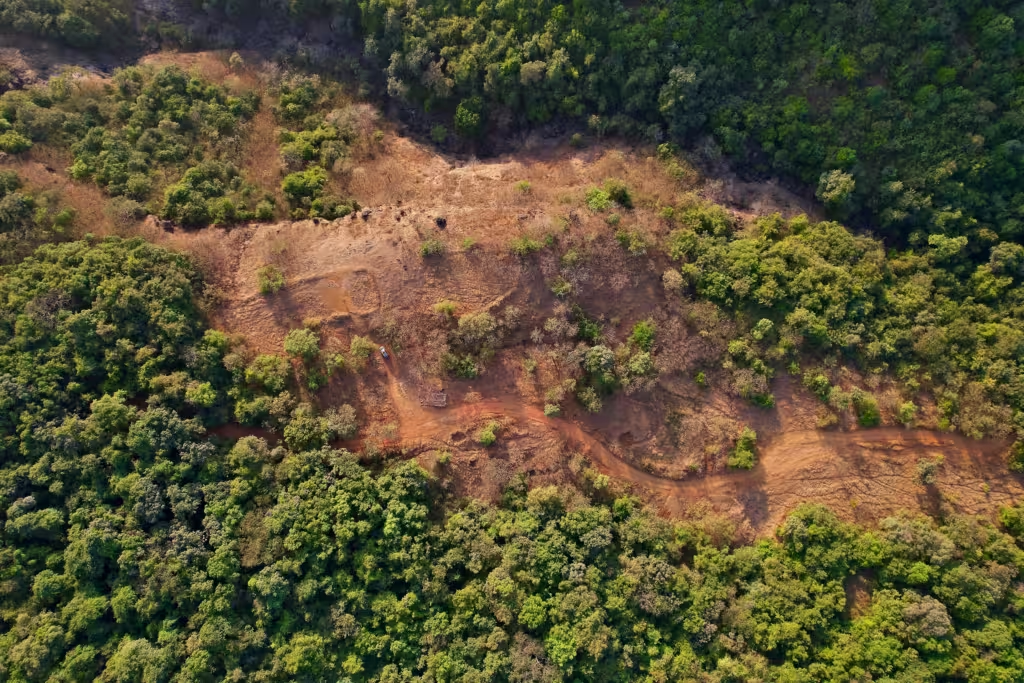Last year Patrick Moore wrote a book Fake Invisible Catastrophes and Threats of Doom in which he called it highly suspicious that all the most urgent environmental disasters that lead to demands we must embrace socialism and austerity to prevent are not things you can actually see for yourself. And now we read that the Amazon rainforest is… wait for it… nearing a tipping point. And the evidence for this proposition: “satellite images taken over the past several decades reveal that more than 75 percent of the rainforest is losing resilience”. So one unobservable thing is proof of another unobservable thing, all of which proves… what exactly?
Something to do with anthropogenic climate change, of course. Not because the study says so but on the say-so of a Washington Post “Climate and science reporter” armed with a “Georgetown University, B.S. in International Culture and Politics” and a byline as “a climate reporter covering humanity’s response to a warming world.” Although we can’t help thinking a real journalist would at least have included a link in the story to the original journal paper. (It’s here. You’re welcome.)
Now if this person were a climate scientist, they might think twice about writing something such as “For the past 50 million years, the Amazon has been in a wet rainforest phase. The trees themselves ensured their continued existence: Water evaporating from leaves created an endless loop of rainfall, while the dense canopy prevented sunlight from drying out the soil. The contours of the forest may have shifted somewhat in response to ice ages, wildfires and rising seas, but it was always able to return to its lush, verdant state.”
Brave rainforest. But since it was much warmer than today for 47.5 million of those 50 million years, as indeed for some portion of the remaining 2.5 million as even the Pleistocene “Ice Age” has featured other interglacials warmer than the current “Holocene” and the “Holocene” was warmer 7000 years ago than it is now, the idea that this marvellous party thrown by Mother Nature will come to a barren end if it gets 0.8°C warmer is hooey.
Scary hooey. The piece says “The Amazon is one of several ‘tipping elements’ in the global climate, scientists say.” Which scientists? Not the journal article authors who actually say “The Amazon is recognized as a potential tipping element in the Earth’s climate system” and refer for that claim to another article that says “Many of the systems we consider do not yet have convincingly established tipping points. Nevertheless, increasing political demand to define and justify binding temperature targets, as well as wider societal interest in nonlinear climate changes, makes it timely to review potential tipping elements in the climate system under anthropogenic forcing.” So political demand to justify binding policy targets leads to drawing up lists of possible tipping points which get passed telephone tag-style down to Washington Post reporters with non-climate science degrees who confidently pronounce what scientists say, even when they don’t say it.
Moving on, if systems like rainforests can change radically in an abrupt non-linear manner then you can look at satellite images until your eyes ache and not see it coming. Which is the real situation since the piece concedes up front that “Viewed from space, the Amazon rainforest doesn’t look like an ecosystem on the brink.” But why let that stop us? So the authors invent an index of “resilience” based on a measure of how fast the density of greenery recovers locally following natural fluctuations up or down. If the recovery rate is getting faster the system is said to be getting more resilient. If it gets slower the system is said to be getting less resilient.
Why? This is not a law of nature, it is just sticking an arbitrary interpretation on an arbitrary statistical calculation. But, taking the label at face value, the study finds that the rainforest was actually getting more resilient from 1991 to 2003 then less resilient from 2004 to 2016. And since there is no data prior to 1991 no one knows if this pattern is the least bit unusual or significant.
Nonetheless the authors do suggest that what might be behind the supposed loss of resilience after 2003 was deforestation and natural climate oscillations. When they only looked at data from regions far from human settlements they found little indication of decreasing resilience, leading them to note “The amplified loss of Amazon resilience in areas closer to human land use suggests that reducing deforestation will not just protect the parts of the forest that are directly threatened but also benefit Amazon rainforest resilience over much larger spatial scales.” So not climate change.
As to the natural causes, the authors attribute the pre-2003 increase in resilience to a natural oceanic system called the Atlantic Multidecadal Oscillation, which shifted phase around 2003, which means the subsequent decrease in resilience is likely attributable to that as well, and (according to the authors) to a drought in 2015-16 due to the El Niño event. Again, natural changes not greenhouse gases.
So a change you can’t observe is probably caused by natural cycles and old-fashioned deforestation. Anything else? Yes. Like the Post the Guardian concedes that “The study does not enable a prediction of when the tipping point could be reached. But the researchers warned that by the time the triggering of the tipping point could be detected, it would be too late to stop it.” Oh. So you can’t detect it, and there’s no way of knowing if it’s happening or not.
Well, again, you can if you’re a newspaper. “Tipping points on a planetary scale are among the greatest fears of climate scientists, as they are irreversible on human timescales. In 2021, the same statistical technique revealed warning signs of the collapse of the Gulf Stream and other key Atlantic currents, with “an almost complete loss of stability over the last century”. A shutdown of these currents would have catastrophic consequences around the world, disrupting monsoon rains and endangering Antarctic ice sheets. Another recent study showed that a significant part of the Greenland ice sheet is on the brink of a tipping point, which would lead to 7 metres of sea level rise over time.”
All tipping points, all the time. Data shows.



To quote HL Mencken once more, “The whole aim of practical politics is to keep the populace alarmed (and hence clamorous to be led to safety) by menacing it with an endless series of hobgoblins, all of them imaginary”. And what a wonderful hobgoblin we have in tipping points! We don't have to justify or explain them, you can't see them or predict when they will occur, but they're lying there like snakes in the grass ready to bite you without warning. Repent ye, O thou SUV driving public and embrace the austere version of socialism that climate alarmists advocate, for the day of judgement is at hand!
And the beauty about this is that whenever some unpleasant natural effect occurs, such as a hurricane or a forest fire, we can say "see, told you so - tipping point!"
Thanks Roger, it bears repeating because it is the foundation of the climate alarmist campaign.
Climate science has learned a lot from religion: you must expiate your sins against God and Gaia just in case the unobservable leads to the unpredictable. In both cases, you cannot see the disaster coming, there is no evidence it is coming, but by the time you wake up it is too late, you are already in hell. So just obey already!
Climate science has learned a lot from religion? On the contrary, climate science is a religion. Science observes data, makes a hypothesis about the underlying causes of that data and then makes predictions about future occurrences based on that hypothesis. If the predictions are wrong, the hypothesis is tossed into the garbage. In contrast, religion provides an underlying theory for everything in such a manner that it cannot be tested by observation ("the forest fire occurred because the gods are angry at us"). Climate science says "children will not know what snow is", then when the country gets blanketed in deep snow a couple of years later says "this is the face of climate change". The academic exponents of climate alarmism are not scientists, they are priests.
Everyone should read Patrick Moore's book. he is a PhD grad in environmental matters and co-founded Greenpeace but left when he discovered they were lying to induce more grants and donations. His book is full of fake news and the real facts. "Global warming" i a fake.
Nobody predicts tipping points to our civilizations well being.
At what point does government and the taxation system run out of money
At what point governments cannot maintain health system
At what point the government is unable to maintain pension system.
At what point legal policing system is beyond funding.
At what point water supply cannot be maintained at safe level.
We demand endless money for climate change, Delete the above and we will not give shit about climate.